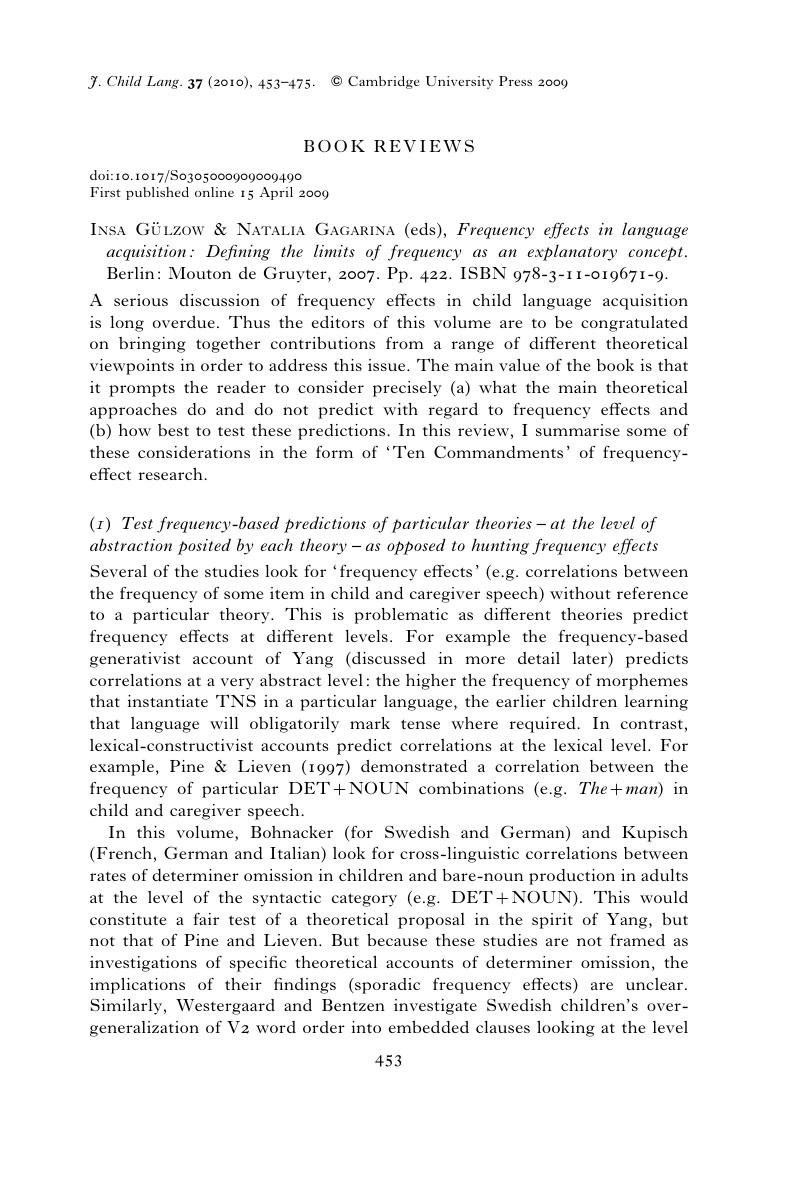Crossref Citations
This article has been cited by the following publications. This list is generated based on data provided by Crossref.
Lieven, Elena
2010.
Input and first language acquisition: Evaluating the role of frequency.
Lingua,
Vol. 120,
Issue. 11,
p.
2546.
Brandt, Silke
Verhagen, Arie
Lieven, Elena
and
Tomasello, Michael
2011.
German children's productivity with simple transitive and complement-clause constructions: Testing the effects of frequency and variability.
cogl,
Vol. 22,
Issue. 2,
p.
325.
Kern, Sophie
Gayraud, Frédérique
and
Chenu, Florence
2014.
The role of input in early first language morphosyntactic development.
Language, Interaction and Acquisition,
Vol. 5,
Issue. 1,
p.
1.
MITROFANOVA, Natalia
and
WESTERGAARD, Marit
2018.
Acquisition of locative utterances in Norwegian: structure-building via lexical learning.
Journal of Child Language,
Vol. 45,
Issue. 4,
p.
981.
2021.
The Cambridge Handbook of Heritage Languages and Linguistics.
p.
373.
O’Grady, William
and
Kim, Chae-Eun
2021.
The Cambridge Handbook of Heritage Languages and Linguistics.
p.
399.
Çabuk‐Ballı, Sakine
Mazara, Jekaterina
Küntay, Aylin C.
Hellwig, Birgit
Pfeiler, Barbara B.
Widmer, Paul
and
Stoll, Sabine
2025.
Negation in First Language Acquisition: Universal or Language‐Specific?.
Cognitive Science,
Vol. 49,
Issue. 2,



